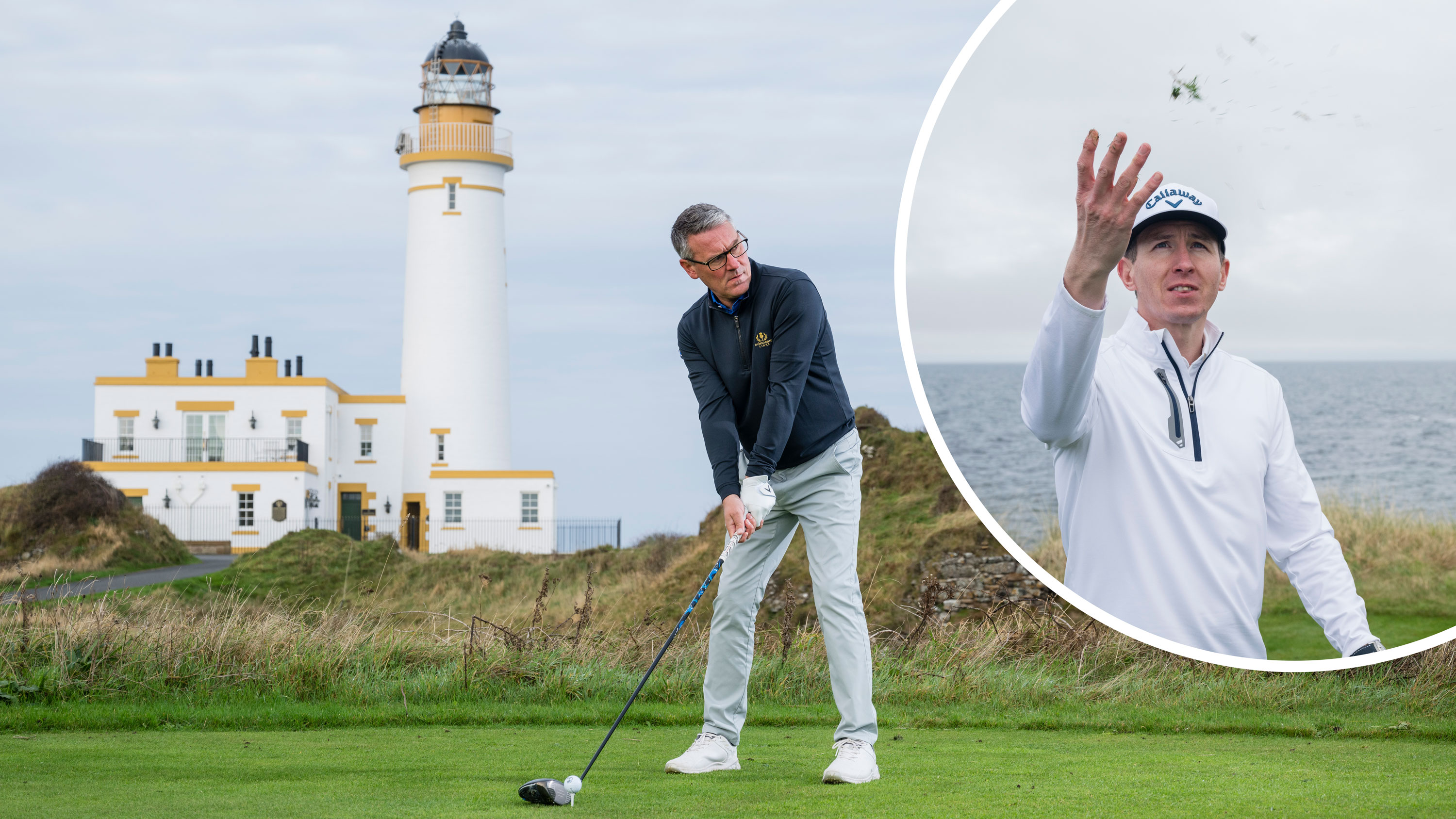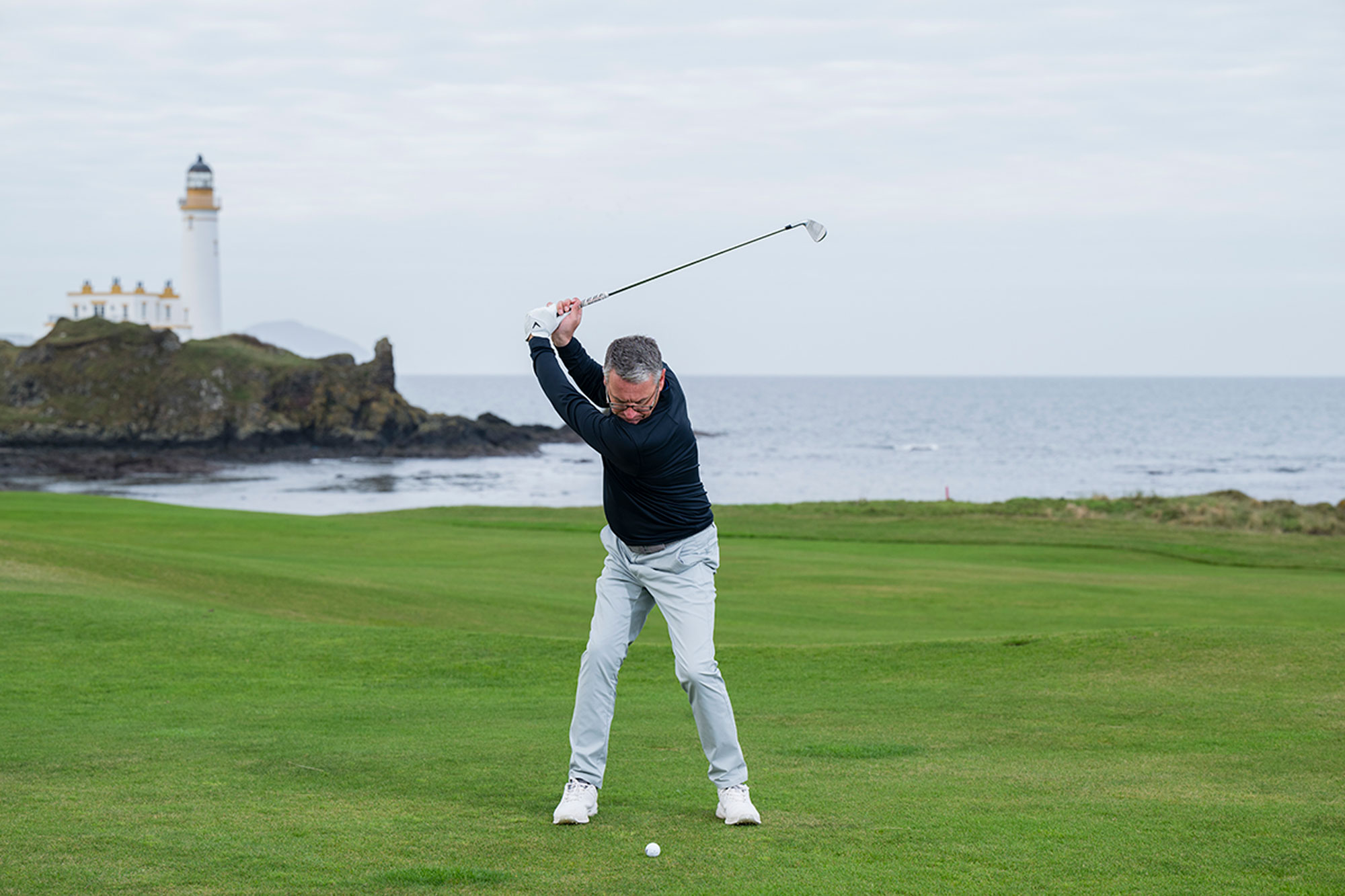How To Calculate Distance In The Wind – A Simple Formula For Golfers
Understanding how to calculate distance in the wind will help you avoid big numbers when conditions get tricky, and these calculations could save you shots...


Having a simple formula for how to calculate distance in the wind is an absolute game-changer for amateur golfers... and you don't have to be a maths whizz!
Learning how to play golf in the wind is essential, as the idea that we always get blue skies and sunshine every time we step onto the course is simply preposterous.
Ultimately, it's no good being able to hit the ball dead straight if the wind has other plans for the ball's final destination.
Most amateurs utilise a combination of guesswork and approximations to predict what will happen to their ball flight in the wind, but that approach is risky and can often lead to inconsistent scoring.
So we decided to create the perfect formula for golfers to follow. In this article, we help you understand how to judge distance in the wind and provide you with some useful calculations that will save you shots on the golf course...
How To Calculate Distance In The Wind
Your initial starting point is working out the direction that the wind is blowing, which can be easier said than done.
This should form part of your pre-shot routine, especially in difficult conditions, and there are a number of methods for gathering this key information.
Subscribe to the Golf Monthly newsletter to stay up to date with all the latest tour news, equipment news, reviews, head-to-heads and buyer’s guides from our team of experienced experts.
For tree-lined or parkland tracks, where the wind is likely to swirl at ground level, the flag might move in a different direction to the clouds. This can be confusing, adding doubt and hampering your confidence to commit fully to your next swing.
For links courses, or tracks with less trees, you can still look up at the clouds or use other methods like throwing grass in the air.

Playing links golf requires a sound understanding of how to calculate distance in the wind
Try not to pay too much attention to ground level, as we are more interested in what will happen when the ball is in the air. Look up at the clouds or check the tree tops instead, focusing on direction of movement.
When the ball reaches its peak above the trees, the wind will almost certainly come into play - so this is the area we are most interested in.
Crosswinds won't affect your distance too much, but they do make it even more important to focus on how to aim properly. Failing to factor in enough wind is just one of the mistakes great golfers don't make.
On the other hand, playing into a headwind or with a tailwind behind will have a huge impact on distance. So, when planning your next shot in windy conditions, we recommend using the following handy calculations...
Wind calculations: Hitting into the wind
The general rule is to add 1% for every 1mph of headwind. So the following distances would change like this:
- 100-yard shot into a 5mph wind = 105 yards
- 200-yard shot into a 5mph wind = 210 yards
- 100-yard shot into a 10mph wind = 110 yards
- 200-yard shot into a 10mph wind = 220 yards
- 100-yard shot into a 20mph wind = 120 yards
- 200-yard shot into a 20mph wind = 240 yards
- 100-yard shot into a 30mph wind = 130 yards
- 200-yard shot into a 30mph wind = 260 yards
Wind calculations: Hitting downwind
When playing downwind you would use 0.5%, so judging your distance in the wind would look like this:
- 100-yard shot with a 5mph tailwind = 98 yards
- 200-yard shot with a 5mph tailwind = 195 yards
- 100-yard shot with a 10mph tailwind = 95 yards
- 200-yard shot with a 10mph tailwind = 190 yards
- 100-yard shot with a 20mph tailwind = 90 yards
- 200-yard shot with a 20mph tailwind = 180 yards
- 100-yard shot with a 30mph tailwind = 85 yards
- 200-yard shot with a 30mph tailwind = 170 yards
Strategy
Irrespective of the number outlined above, you can't afford to neglect the art of picking the right club. Considerations around how to shape golf shots will come into your decision process, but the simple concept is that if you aim to hit your shot in the same direction as the wind is blowing, the ball will travel further.

Choosing the correct club is crucial to execute a good shot in challenging conditions, but first you need to calculate distance in the wind in order to make an informed decision
So, if you are hooking the golf ball (or cutting across the golf ball for a left-hander) and the wind is blowing right to left, it is likely to go further.
You might think this is a huge benefit but, for many good ball-strikers, looking for precise distance control when hitting into the greens can cause problem if you don't factor in the extra distance.
For these players, shaping the ball back into the wind is often the better play, creating a softer ball flight that will stop faster after landing. For those who tend to play with the same shape on the majority of shots, keep in mind that the ball will go further when moving in the same direction as the wind.
Calculating distance in the wind: 4-Point checklist
1) Work out which way the wind is blowing as part of your pre-shot routine
2) Check the tops of the trees for help with wind direction in the air, as this may be different to ground level
3) Use the handy calculations we have provided to judge distances in the wind
4) Aim at your target based on your shot-shape, and use the wind to your advantage.

A lifelong golf fan, Andy graduated in 2019 with a degree in Sports Journalism and got his first role in the industry as the Instruction Editor for National Club Golfer. From there, he decided to go freelance and now covers a variety of topics for Golf Monthly.
Andy took up the game at the age of seven and even harboured ambitions of a career in the professional ranks for a spell. That didn’t pan out, but he still enjoys his weekend golf at Royal Troon and holds a scratch handicap. As a side note, he's made five holes-in-one and could quite possibly be Retief Goosen’s biggest fan.
As well as the above, some of Andy's work has featured on websites such as goal.com, dailyrecord.co.uk, and theopen.com.
What's in Andy's bag?
Driver: Callaway Mavrik Sub-Zero (9°)
3-wood: TaylorMade Stealth 2 Plus (15°)
Driving iron: Titleist U500 (17°)
Irons: Mizuno mp32 (4-PW)
Wedges: Titleist Vokey SM9 (50°, 54° and 58°)
Putter: Titleist Scotty Cameron Newport 2.5
Ball: TaylorMade TP5x
You must confirm your public display name before commenting
Please logout and then login again, you will then be prompted to enter your display name.